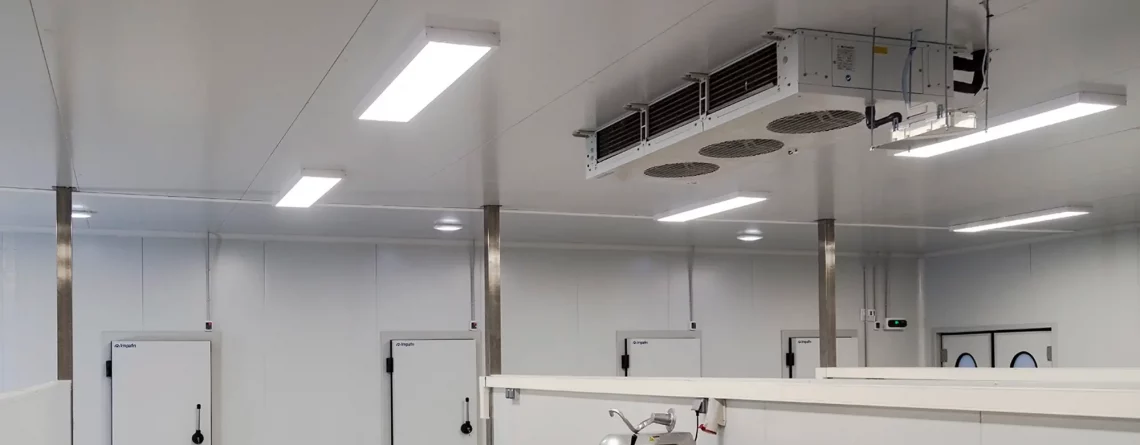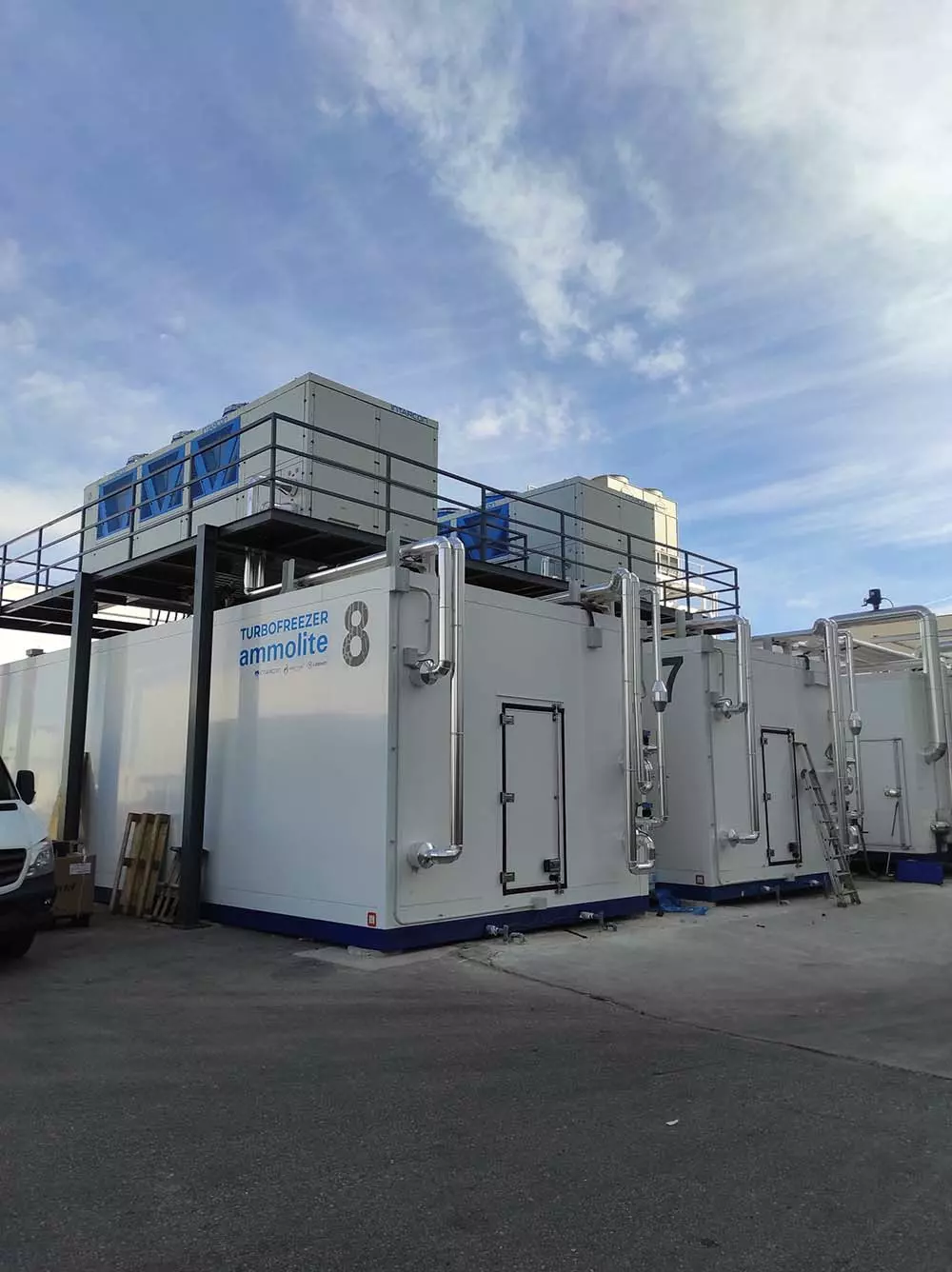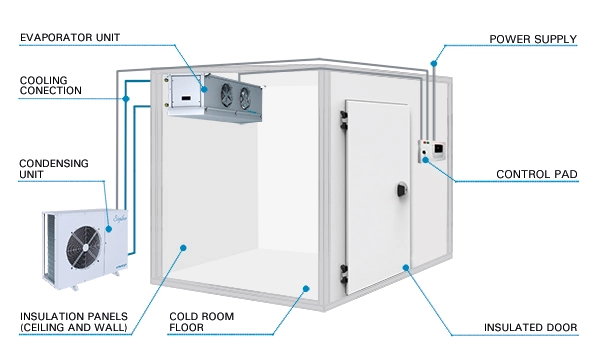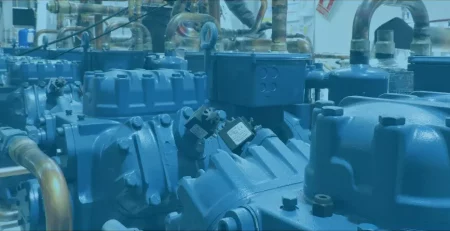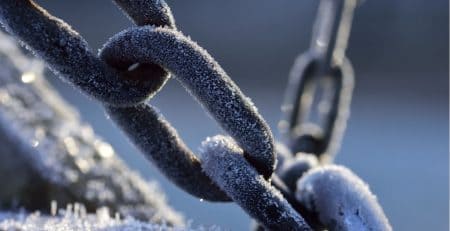Types of cold rooms
INTARCON2024-12-12T08:10:58+01:00Cold rooms are spaces where, thanks to a refrigeration system that establishes certain climatic conditions, the conservation or manufacturing process of different products is favoured.
They are a fundamental element in many sectors. From the food and HORECA sector for the correct preservation of food, to the industrial sector for production processes where refrigeration is involved. For example, in a vehicle test tunnel, where a cold room simulates certain climatic conditions, or in the manufacturing process of medicines such as insulin.
Cold rooms can be classified according to their function, or size of construction.
Cold rooms according to their temperature range.
Depending on the temperature range at which the cold rooms operate, there are four types of cold rooms:
- Storage cold rooms or positive temperature cold rooms, are designed for the conservation of products between 0 and 10 ºC. They are mainly used for the preservation of fresh food, beverages or medicines.
- Freezing cold rooms or negative temperature cold rooms are used to keep frozen products between 0 and -28ºC. They usually have better insulation and fewer daily openings. Frozen food, vaccines, or organic material are kept at these temperatures.
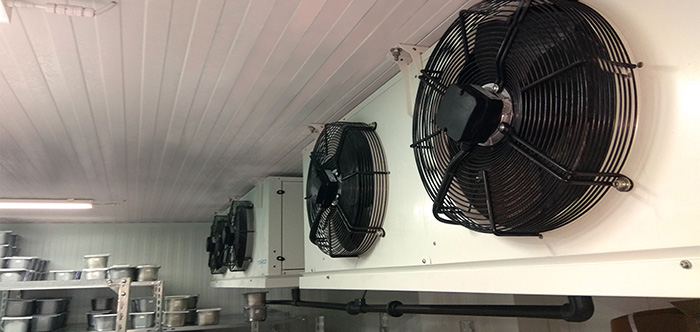
- Deep freezing tunnel. In this type of freezing cold room, which reaches -30 ºC to -40 ºC. It freezes the product individually by means of automatic displacement systems and cold currents while the product moves around inside the chamber. They are mainly used in the food industry for the freezing of meat trays or sweets.
- Temperature blast chillers. In this type of cold room, the aim is to quickly reduce the temperature of the product to reduce the risk of contamination and to be able to preserve them for longer without losing their properties. This type of cold room is commonly used in the preparation of food in industrial kitchens.
Size of cold room
In consideration of the size of the camera, we find:
- Small sized cold rooms, up to 30 m3, for use in catering and local shops, butchers, fishmongers, ice cream shops…
- Medium sized cold rooms up to 200 m3, used in supermarkets, cold rooms, hotels, pharmaceutical laboratories, …
- Large industrial cold rooms up to 3000 m3. These chambers are located in large logistics centres or auctions.
Cold rooms according to their size.
A cold room needs the following parts:
- Panels, floors and roofs, usually made of sandwich panels. The sandwich panel is composed of two steel sheets protecting an insulating core of high density polyurethane. This panel is responsible for the most efficient and durable cooling of the cold room.
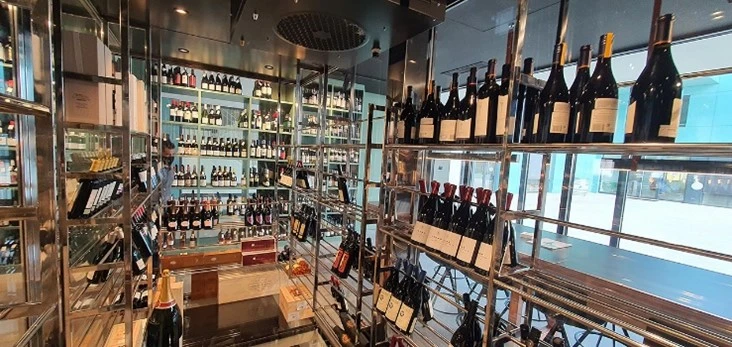
- Airtight door. It can be sliding or pivoting, and incorporate an air curtain, or louvres to mitigate cold losses with each door opening.
- Humidifiers or dehumidifiers. These allow humidity (relative humidity) to be added to or removed from the cold room in such a way that it adapts to the best preservation conditions for the stored product.
- Cooling or freezing equipment. The choice of refrigeration unit is essential for the good preservation of the product. It may be monoblock or split system:
- A monoblock refrigeration unit is one in which the condenser and evaporator are in one unit.
- A split refrigeration system that consists of two units, the condensing unit separated from the evaporator. The installation of this type of system is more complex, but it allows the selection of the type of evaporator that best adapts to the optimum preservation conditions for each product and expels the hot air from the room where the cold room is located.
- Ventilation and air extraction system.
- Locked man alarm.
- Gas leakage alarm system.
How not to make a mistake when you choose a refrigeration unit?
INTARCON has the system Calcooling, a software developed to calculate the refrigeration needs of a cold room and select the refrigeration equipment, where by introducing certain parameters according to the type of cold room (modular, refrigerated cabinet, display cabinet, building site…), type of insulation and size, the refrigeration calculator indicates the appropriate equipment..
In addition to indicating the type of cold room, the refrigeration calculator knows the standard conservation parameters for all types of products (meat, vegetables, cereals, dairy products, fruit, pharmaceutical products, bread, wine, seafood…), and allows you to enter the number of door openings, daily air renewals, external humidity or even the product load in the cold room. With all this data, the tool gives us the refrigeration needs of that chamber, in other words, the refrigeration power you need to conserve the product optimally.
With these technical requirements, and taking into account the regulations for the installation of refrigeration equipment, we can choose the ideal equipment for the cold room.
